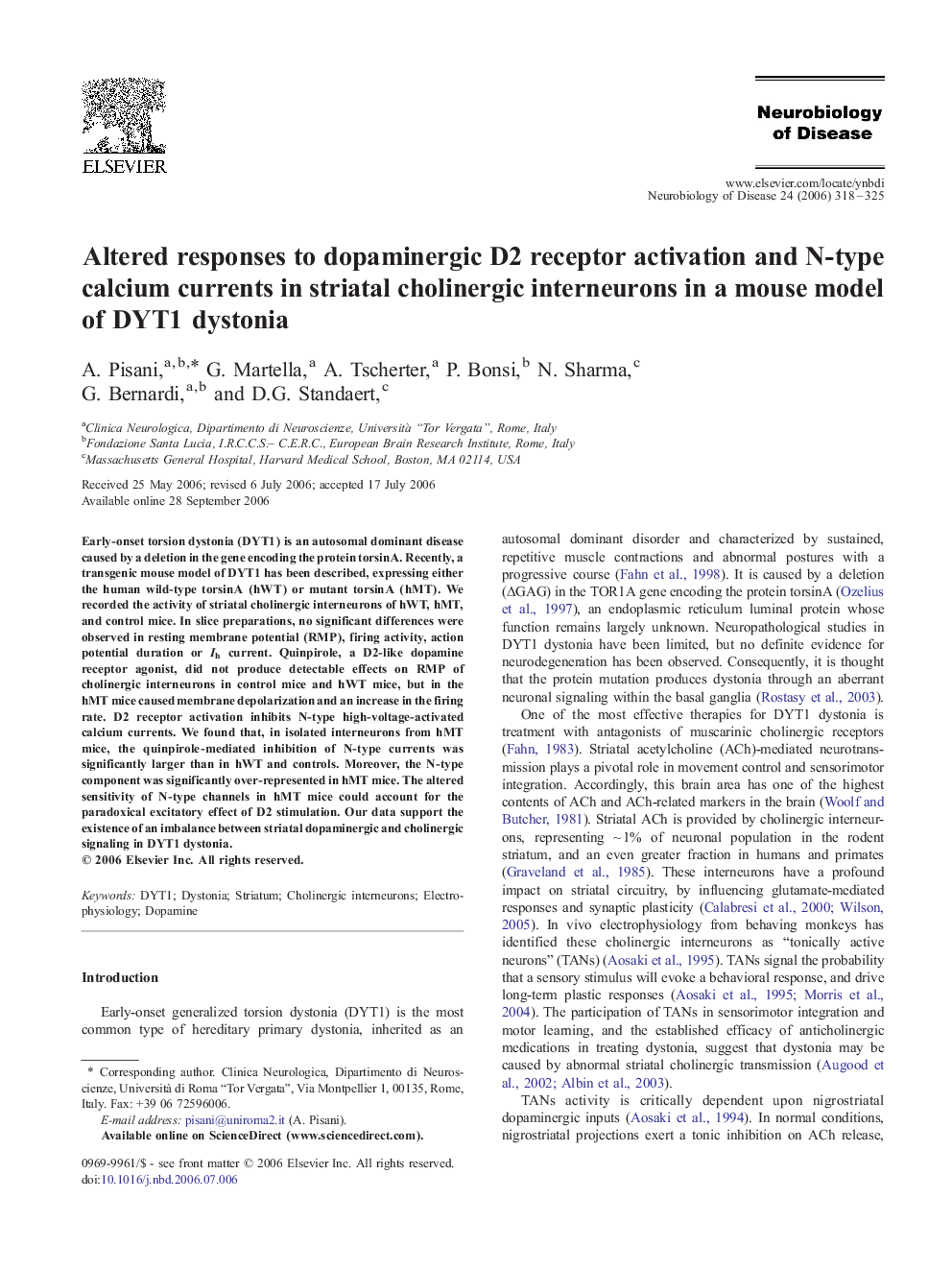| Article ID | Journal | Published Year | Pages | File Type |
|---|---|---|---|---|
| 3070858 | Neurobiology of Disease | 2006 | 8 Pages |
Early-onset torsion dystonia (DYT1) is an autosomal dominant disease caused by a deletion in the gene encoding the protein torsinA. Recently, a transgenic mouse model of DYT1 has been described, expressing either the human wild-type torsinA (hWT) or mutant torsinA (hMT). We recorded the activity of striatal cholinergic interneurons of hWT, hMT, and control mice. In slice preparations, no significant differences were observed in resting membrane potential (RMP), firing activity, action potential duration or Ih current. Quinpirole, a D2-like dopamine receptor agonist, did not produce detectable effects on RMP of cholinergic interneurons in control mice and hWT mice, but in the hMT mice caused membrane depolarization and an increase in the firing rate. D2 receptor activation inhibits N-type high-voltage-activated calcium currents. We found that, in isolated interneurons from hMT mice, the quinpirole-mediated inhibition of N-type currents was significantly larger than in hWT and controls. Moreover, the N-type component was significantly over-represented in hMT mice. The altered sensitivity of N-type channels in hMT mice could account for the paradoxical excitatory effect of D2 stimulation. Our data support the existence of an imbalance between striatal dopaminergic and cholinergic signaling in DYT1 dystonia.
